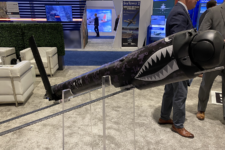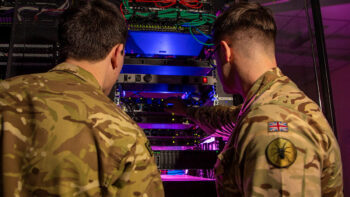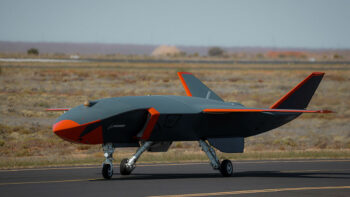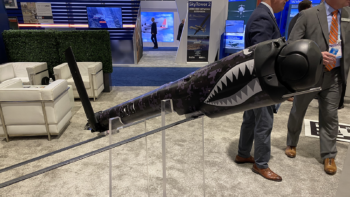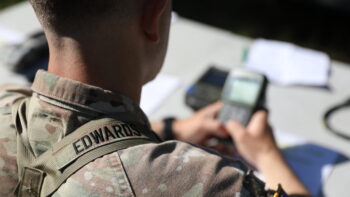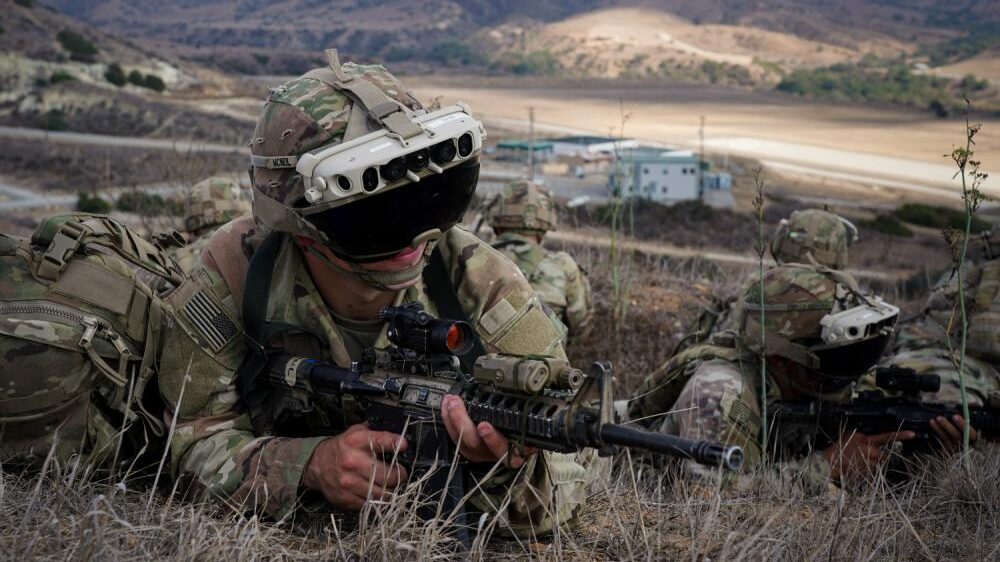
An 82nd Airborne 3rd Brigade Combat Team soldier trains with the Integrated Visual Augmentation System (IVAS) as a part of Project Convergence 2022. (TRADOC via Twitter)
WASHINGTON — Microsoft and the Army have agreed on a plan of attack for developing an updated Integrated Visual Augmentation System (IVAS) heads-up display, one they are hoping soldiers will actually want to wear in combat.
The duo have spent several years developing and testing out different militarized versions of the company’s HoloLens 2 heads-up display, an endeavor that has delayed fielding by two years. Still the modifications have not been enough, and ongoing software glitches combined with poor soldier feedback prompted the Army to craft a new path ahead that Microsoft has now agreed on, keeping the 10-year, $22 billion deal alive.
Specifically, the service announced today that it awarded Microsoft a “task order” in late December 2022 to redesign the device under the umbrella of an IVAS 1.2 variant.
“Under that agreement, the Army envisioned improving the system through an iterative process, and this task order will provide improvements based on completed test events,” the service wrote.
The service made sure to note one important change this time around: It would not repeat its past mistake of placing orders for the new device before thoroughly testing it out.
“Delivery orders for IVAS 1.2 production systems will be placed after qualification and operational testing,” the service wrote.
The service did not disclose additional details about the development timeline for IVAS 1.2 or the projected per unit cost, but in November 2022, IVAS Product Manager Col. Troy Denomy said the service was negotiating a lower price point for the redesign. Although he did not identify the target price at the time, he said the Army is spending $46,000 on each of the 5,000 1.0 version units it is currently buying. That price tag includes the heads-up display, puck, batteries, a radio, chargers and a share of the tactical cloud package.
While the news of the agreement was expected, it does mean the Army does not have imminent plans to re-open the competition and will continue onward with Microsoft, despite challenges they have faced together over the years.
Army officials envision soldiers using IVAS both in the classroom and on the battlefield to include mixed-reality training, operational prep, for night vision, battlefield communications and much more. However, taking a commercially available gaming device and modifying it into something suitable for the harsher conditions of war proved more difficult than both stakeholders expected on an expedited timeline.
“We ran into a challenge, which is not uncommon, which is you have a commercial technology that’s very good in a commercial setting but adapting it to military use and conditions is sometimes much harder than people think it’s going to be — much harder,” Assistant Secretary of the US Army for Acquisition, Logistics, and Technology Douglas Bush told Janes in November 2022. “Nobody gaming in their basement worries about light emissions. Nobody wears it for three hours very often … The risks of discomfort are different.”
“You’re just in your basement playing a game, you’re not in combat,” he added.
In 2021, the Army got ahead of itself when it issued a production contract before discovering weeks later that there were problems with the device, and it would have to delay fielding plans from 2021 until 2022 to address hardware and software fixes. Then in mid-2022 it conducted an operational test with the device, a version now known as IVAS 1.0. However, software glitches persisted. Soldiers also continued to complain about the physical side effects of wearing the device (nausea and dizziness) and about the night-vision capability. During hard rain, water leaked into the heads-up display, Denomy confirmed.
Ultimately, the Army decided IVAS 1.0 was not ready for prime time but was not yet ready to scrap it. Instead, Bush and other program officials netted together a mitigation plan with three IVAS iterations dubbed 1.0, 1.1, and 1.2.
For IVAS 1.0, used during the operational test, the service agreed to buy 5,000 units and began accepting them last year. However, the Army said today that it will not field these devices until August, two years later than initially planned. These devices will also never make their way to the battlefield. Instead, they will be sent to schoolhouses for training and to the Army Recruiting Command for prospective soldiers to try out, Bush previously explained.
In the meantime, the Army and Microsoft will begin work on IVAS 1.1 that will maintain the current helmet-like display but add in an improved low-light sensor to aid maneuver and positive target identification, according to the service. If the upgrades are deemed acceptable, Bush has said the service will buy an additional 5,000 units for non-light infantry units, such as Stryker units, in the late 2023-24 timeframe.
The big change comes with IVAS 1.2, when the helmet-style display is redesigned and morphed into something more soldier-friendly like ski goggles or a kind of visor that can be easily flipped up.
“IVAS 1.2 will include a new form factor to address human systems integration, including physiological impacts identified during testing, and a lower profile heads-up display with distributed counterweight for improved user interface and comfort,” the Army wrote in today’s announcement. “IVAS 1.2 will also include software improvements for increased reliability and reduced power demand.”
Elbit’s new Red Sky air defense system goes public with first customer
The system includes a radar, as well as links to a 30mm gun and missile system for downing threats within ranges of seven kilometers and 15,000 feet, according to a company executive.





